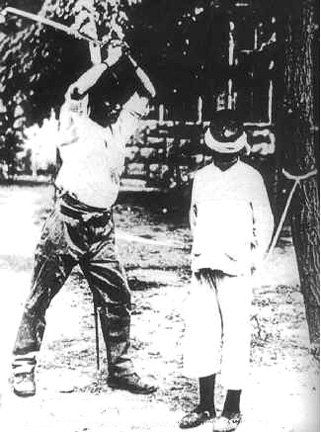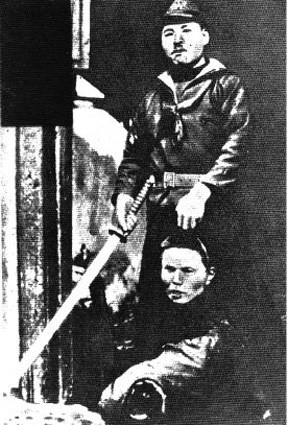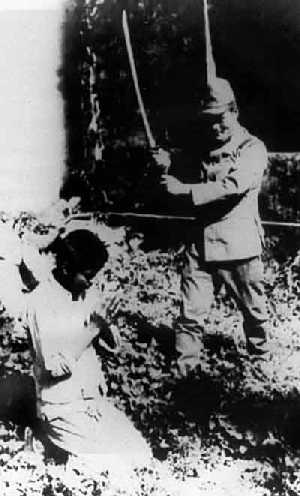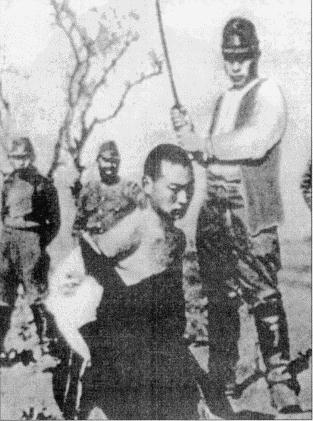
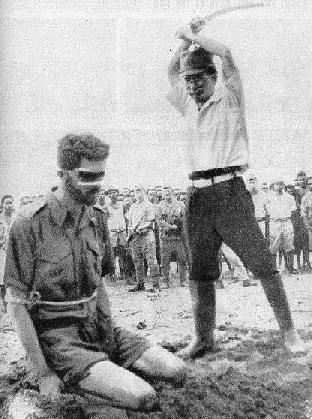
| February 6, 1998 |
E-mail: [email protected]
Dear Ms. McLellan:
I understand that the war crimes unit of the Justice Department employs historians on its staff. I wonder if any of these historians have ever been asked to scan the historical record to bring to your notice the greatest war crimes that lie within living memory, or whether these historians have always been put to the narrower task of only locating Nazi war criminals from among non-Jewish Eastern Europeans?
I ask this question because I perceive a lack of proportion between the people who have committed the great war crimes, and the people who your Justice Department is singling out for prosecution. Examples of this lack of proportion abound, and in this letter I will start by outlining one such example, and proceed to other examples in future letters.
The example that I want to bring to your attention in the present letter is that of Japanese war crimes during World War II, and I will pretty much limit myself to alluding to the Rape of Nanking, recently widely discussed in the media following the publication of Iris Chang's book, The Rape of Nanking. Below is a summary of the historical event from Edward Alden's review of Iris Chang's book (The Vancouver Sun, December 13, 1997, A12):
|
IN NOVEMBER 1937, after their successful invasion of Shanghai, the Japanese launched a massive attack on the newly established capital of the Republic of China. When the city fell on Dec. 13, 1937, Japanese soldiers began an orgy of cruelty seldom, if ever, matched in world history. TENS OF THOUSANDS of young men were rounded up and herded to the outer areas of the city, where they were mowed down by machine-guns, used for bayonet practice, or soaked with gasoline and burned alive. For months the streets of the city were heaped with corpses and reeked with the stench of rotting human flesh. Years later experts at the International Military Tribunal of the Far East (IMTFE) estimated that more than 260,000 non-combatants died at the hands of Japanese soldiers at Nanking in late 1937 and early 1938, though some experts have placed the figure at well over 350,000. ... USING NUMBERS KILLED alone, the Rape of Nanking surpasses much of the worst barbarism of the ages. The Japanese outdid the Romans at Carthage (only 150,000 died in that slaughter), the Christian armies during the Spanish inquisition, and even some of the monstrosities of Timur Lenk, who killed 100,000 prisoners at Delhi in 1398 and built two towers of skulls in Syria in 1400 and 1401. IT IS CERTAINLY TRUE that in this century, when the tools of mass murder were fully refined, Hitler killed about six million Jews, and Stalin more than 40 million Russians. But these deaths occurred over several years. In the Rape of Nanking the killing was concentrated within a few weeks. |
One would imagine, then, that if your Justice Ministry were truly looking for war criminals to prosecute or to extradite, then the Rape of Nanking would provide rich pickings. Given the massive participation of Japanese troops in war crimes such as the Rape of Nanking, any Japanese immigrant to Canada who had served in the Japanese armed forces should have been investigated with particular thoroughness, and appropriate action taken. My impression is that this has not been done, and that in fact the Deschênes Commission turned out to be not as its name implies a commission on war criminals at all, but only a commission on non-Jewish East European — particularly Ukrainian — war criminals during WW II. And my impression also is that your present search for war criminals is similarly not truly a search for war criminals, but only a search for non-Jewish East European — particularly Ukrainian — war criminals during WW II.
But what have Ukrainians done to compare with the Rape of Nanking? Not much. They are quite excluded from lists of atrocities such as those given in the quoted material above. Jewish Holocaust historian Raul Hilberg summarizes Ukrainian anti-Jewish activity thusly:
| First, truly spontaneous pogroms, free from Einsatzgruppen influence, did not take place; all outbreaks were either organized or inspired by the Einsatzgruppen. Second, all pogroms were implemented within a short time after the arrival of the killing units. They were not self-perpetuating, nor could new ones be started after things had settled down. (Raul Hilberg, The Destruction of the European Jews, 1985, p. 312) |
| The Slavic population stood estranged and even aghast before the unfolding spectacle of the "final solution." There was on the whole no impelling desire to cooperate in a process of such utter ruthlessness. The fact that the Soviet regime, fighting off the Germans a few hundred miles to the east, was still threatening to return, undoubtedly acted as a powerful restraint upon many a potential collaborator. (Raul Hilberg, The Destruction of the European Jews, 1985, p. 308) |
Ukrainian war crimes during World War II, then, appear to be rather paltry in comparison to some that can be found. Ukrainians were under occupation, viewed and treated by the Germans as sub-human, subjected to monstrous cruelties and to summary execution for the least offense, often rounded up and murdered in large numbers in retaliation for anti-German partisan activity in an area.
To underline this same contrast in pictures instead of words, please find enclosed copies of two photographs, each of a Japanese soldier about to behead a prisoner. In one case, the victim is Chinese and the event occurs during The Rape of Nanking. In the other, the victim is an Allied flier and the setting is the Pacific Theater. Again, I bring to your attention that Ukrainians provide no counterparts to these, and countless other, images of Japanese atrocities. During the war itself, there was no confusion about who the war criminals were — and it was not Ukrainians. It is only in recent times that history has been re-written to suggest otherwise.
Indeed, the focus of much of the current hysteria concerning war criminals continues to be the Galicia Division, the same Galicia Division that has already been exonerated at length by Canada's Deschênes Commission in 1986 and also in several earlier investigations. Noteworthy in this respect is that the Galicia Division was a combat unit organized with the stipulation from the Ukrainian side that it not be used against the Western Allies, but only against the Soviets on the Eastern Front. What a contrast! — On the one hand, the Japanese, collectively and enthusiastically participating in an orgy of slaughter, much of it directed against the Allies; and on the other hand, Ukrainians refusing even while occupied by a brutal force to lift a hand against the Allies. And yet today, it is among Ukrainians and not among Japanese that your Justice Department searches for war criminals.
Why this disproportion between crime and punishment? The answer is obvious. We do not prosecute Japanese war criminals because today the Japanese supply us with Nikon cameras, Sony television receivers, and Toyota cars.
I do not write this letter to urge you to begin investigating Japanese immigrants for possible participation in war crimes. The time for that has passed. Rather, I write this letter to urge you to come to the recognition that you are transforming Canadian Justice from an instrument to punish the guilty into a political weapon. The government's power to inflict harm, you are directing away from individuals who — acting voluntarily — have committed great crimes because today these individuals happen to be strong. You are directing the government's power to inflict harm toward individuals who — under unbearable duress — have committed small crimes, because today those individuals happen to be weak. That is your contribution to Canadian justice.
Yours truly,
Lubomyr Prytulak
 |
 |
